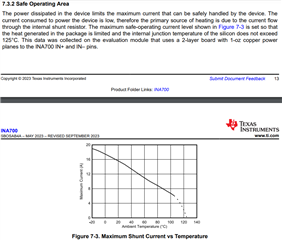Hi,
We are trying to design an earth resistance meter that forces a voltage across the earth resistance and measure the sense current, returning the measurement to an MSP430, which then outputs to a display.
We are planning to choose INA700 for the current sensing because of it's integrated high accuracy resistance and digital output which we can directly interface with MSP430, and the EVM is also designed to make the required firmware development and testing easier and low cost, making it a very appropriate choice.
Here are a few questions regarding the concept:
- The earth resistance can have a wide range from 100m ohms to 10 ohms, which means that the current through the INA will range from 100mA to 10A . How will the current sense accuracy vary over this range of currents?
- 10A of current through 2m ohms of integrated resistance may cause internal heating due the 200mW of dissipated power. Is this a concern?
- Will the same concept work if we force a 2KHz sinusoidal voltage and measure the variable ADC output? Are there any issues that we may face while testing this concept with the MSP430 SCB and INA700EVM?
Thanks and best regards
Divyanshu


